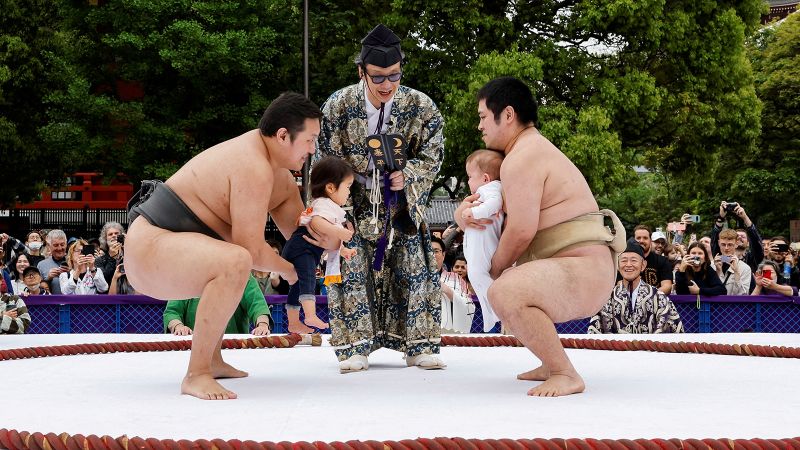CNN
—
Japan’s estimated child population has shrunk for the 44th straight year to a record low, government data showed Sunday, as the country grapples with a demographic crisis underscored by falling birth rates and a rapidly aging population.
The number of children aged 14 and under, was 13.66 million as of April 1, down 350,000 from a year ago, according to data released by the Ministry of Internal Affairs and Communications ahead of the country’s Children’s Day public holiday.
Children make up just 11.1% of Japan’s total population, which stood at 123.4 million last year, marking a marginal decline from the year prior.
By comparison, the proportion of children to the population was roughly 21.7% for the US in 2023 and 17.1% for China in 2024, according to respective government figures.
The demographic crisis has become one of Japan’s most pressing issues, with its birth rate continually declining despite government efforts to encourage young people to get married and start families.
Japan’s fertility rate – the average number of children born to women in their lifetime has stayed relatively flat at 1.3 in recent years – far below the 2.1 required to maintain a stable population.
For decades, it has been on a downward trend that has also seen the number of deaths overtaking births each year, causing the total population to shrink – with far-reaching consequences for Japan’s workforce, economy, welfare systems and social fabric.
In 2024, the country recorded 1.62 million deaths, according to the Health Ministry – more than double the number of births. The number of marriages rose only slightly, up around 10,000 from the year prior, but remained low, figures showed, while the number of divorces also rose.
Experts say the decline is expected to continue for at least several decades and is to some extent irreversible due to the country’s population structure. Japan is a “super-aged” nation, meaning more than 20% of its population is older than 65. The country’s total population stood at 123.4 million in 2024 – but by 2065 it is expected to have dropped to about 88 million.
There are several factors to explain why fewer people are opting to marry and have children, experts say, including Japan’s high cost of living, stagnant economy and wages, limited space, and the country’s demanding work culture.
Japan has a deeply-ingrained overwork culture. Employees across various sectors report punishing hours and high pressure from supervisors, leaving many young people of childbearing age to focus on their careers rather than starting a family.

Increasing living costs, which have been worsened by the weak yen, a sluggish economy and high inflation have contributed to public discontent, experts say.
The government, however, has sought to soften the impacts of its changing demographics, launching new government agencies to focus specifically on boosting fertility rates and incentivizing marriage. It has launched initiatives such as expanding child care facilities, offering housing subsidies to parents, and in some towns, even paying couples to have children.
Several of Japan’s neighbors, including China, Hong Kong, Taiwan, and South Korea have also struggled with population decline, as do several European nations such as Spain and Italy. However, unlike many of their East Asian counterparts, European nations have been far more open to immigration to soften the aging of their societies.
China, until recently the world’s most populous country, saw its population fall for a third consecutive year in 2024 with the number of deaths outpacing new births. India has now overtaken China on population size.
Correction: This article’s headline has been corrected to 14 years-old and under.

